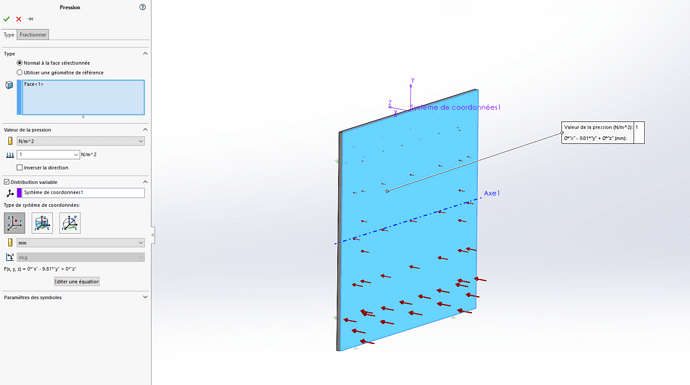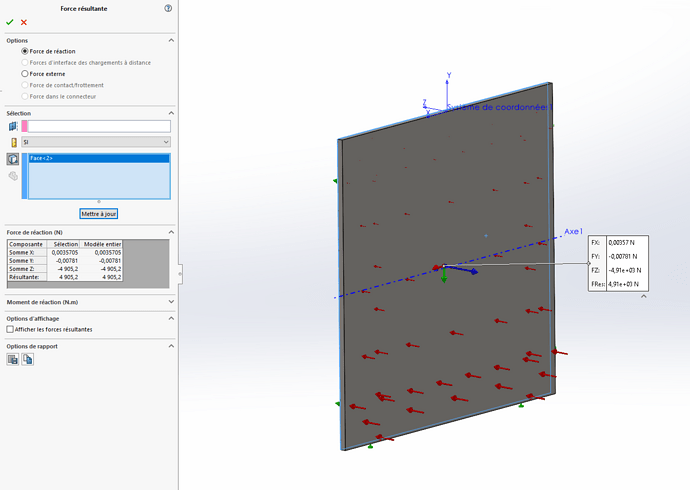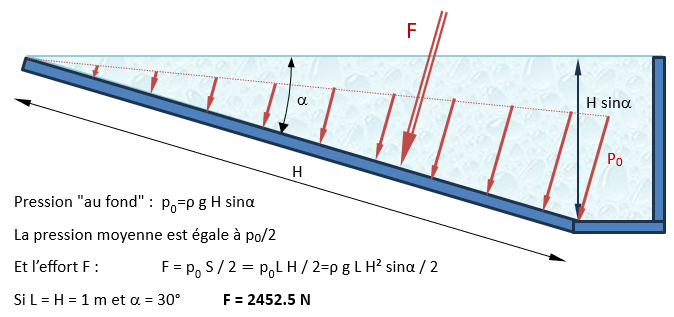Hello
I want to check with SW the water pressure force on an inclined plane. When I do the simulation on a vertical surface, SW gives me a resultant force equal to my theoretical formula: F = 1/2 x ρ x g x H² x L with H the height of my plane (and also my water height) and L its width.
I simulated it with a 1 m x 1 m plane with a hydrostatic pressure that starts from the top of my plane:
The simulation gives me a resultant force of 4905 N which corresponds to the calculation: 1/2 x 1000 x 9.81 x 1² x 1 = 4905 N
However, when I consider my 60° inclined plane, I create my new coordinate system (No. 2) to be able to configure my pressure. The pressure is proportional to my altitude, which this time is along the Z axis of my new coordinate system:
In this case, my theoretical calculation tells me: F = 1/2 x ρ x g x H x h x L cos(α) with H the height according to my Z axis (0.5 m in my case) and h the height of the inclined plane (1 m). So: F = 1/2 x 1000 x 9.81 x 0.5 x 1 x 1 x cos (60°) = 1226 N
But when I calculate SW I find: 2452 N
SW gives me double. We know that cos(60°) = 0.5 so it comes from there, but I don't understand why SW doesn't get the right result with these parameters. I thought it could come from my pressure, but it is well applied according to my Z altitude of my coordinate system 2...
I'm stalling the... Any ideas?




